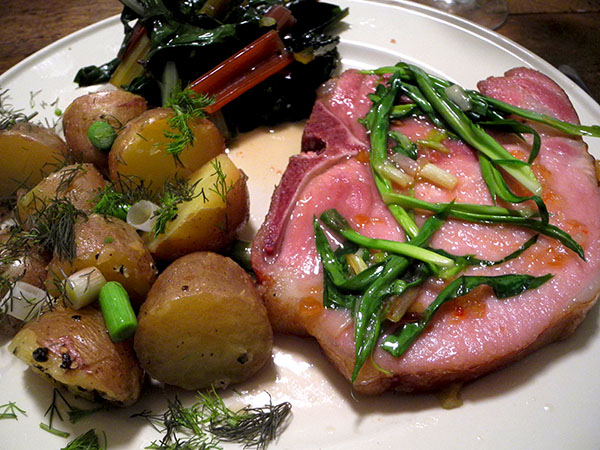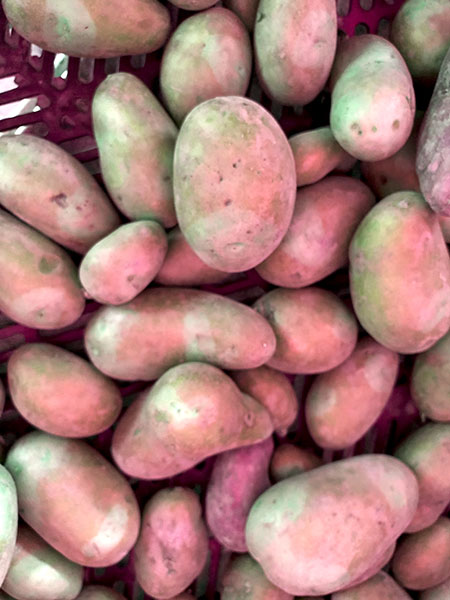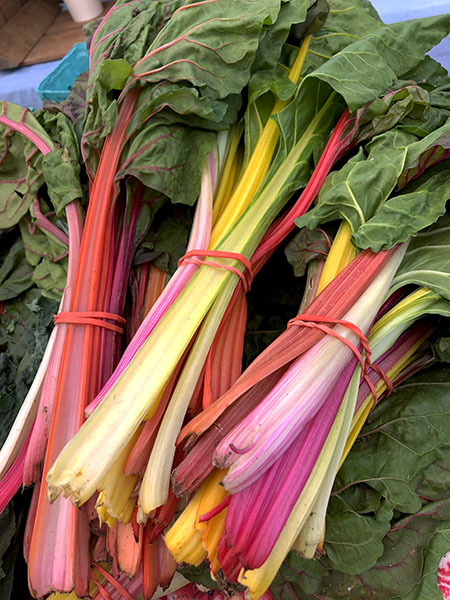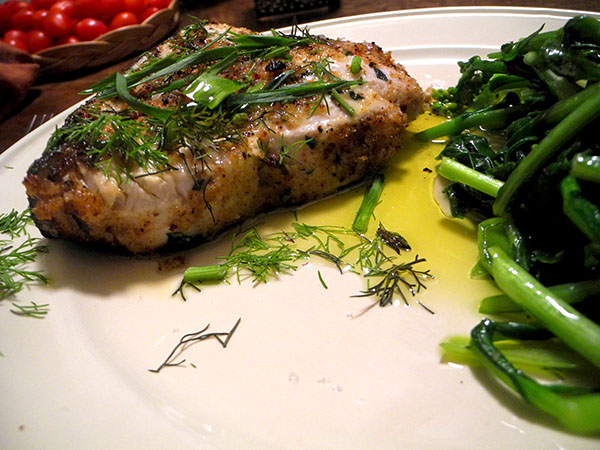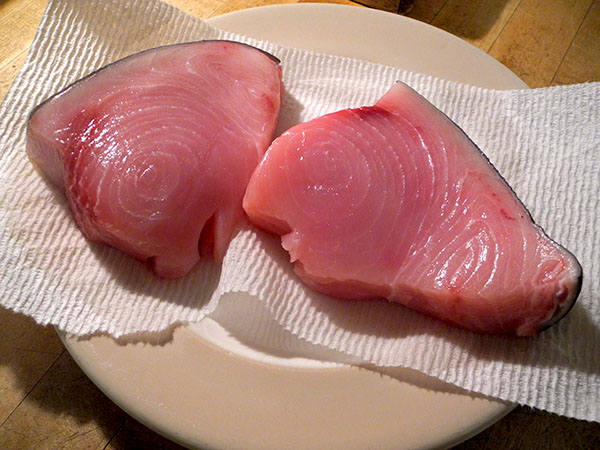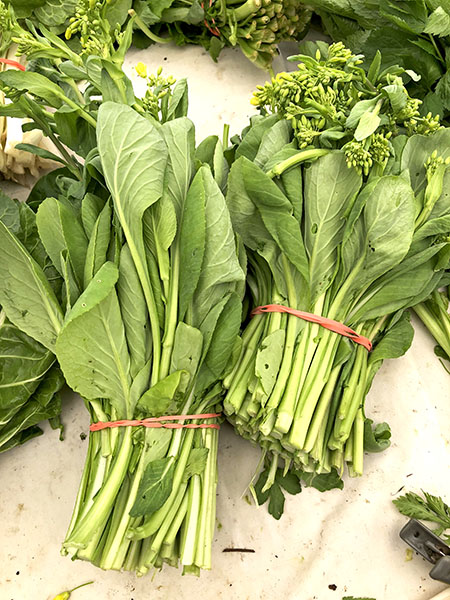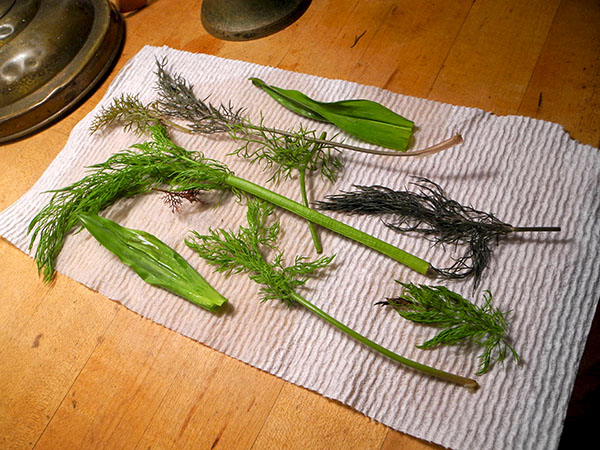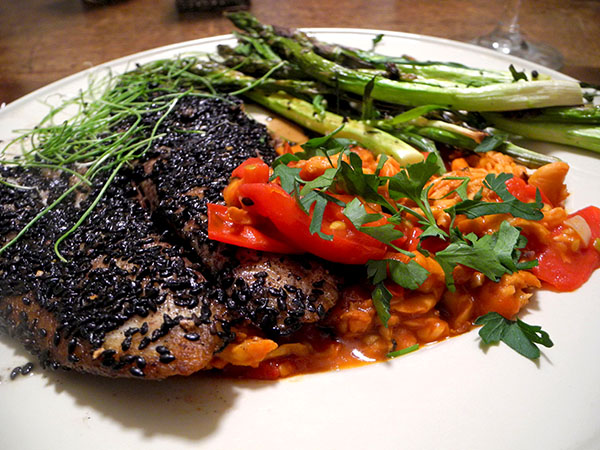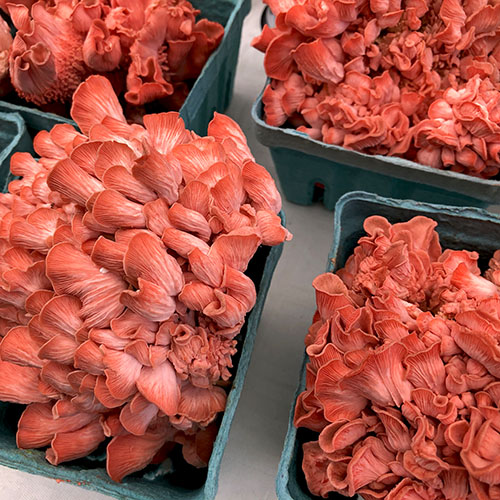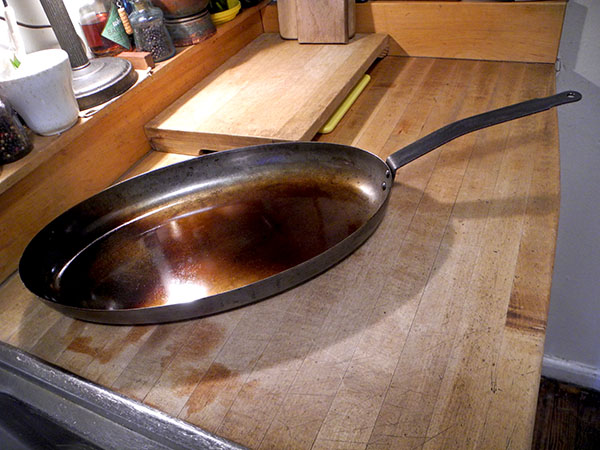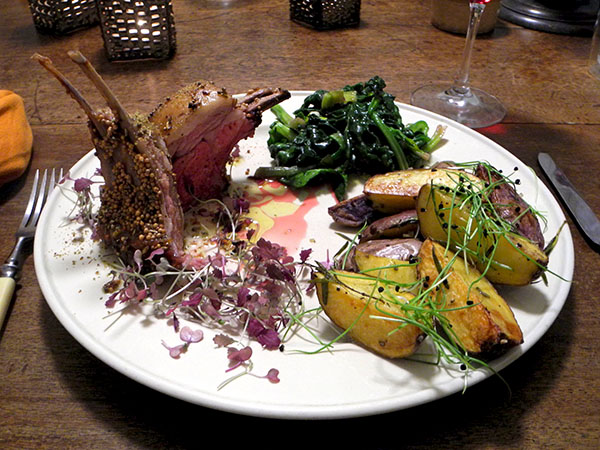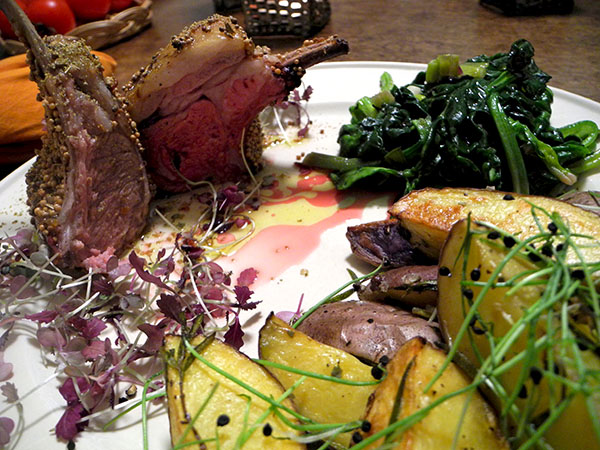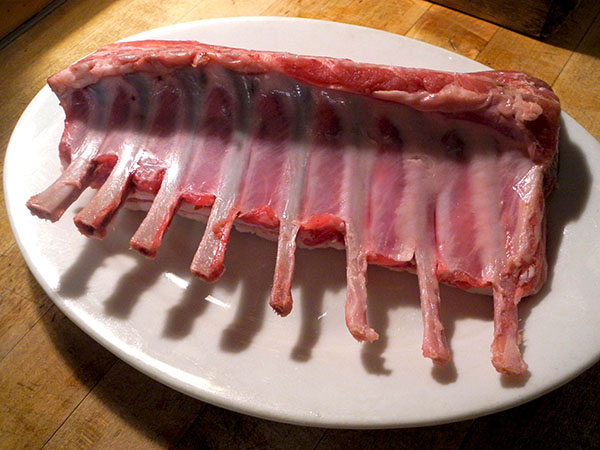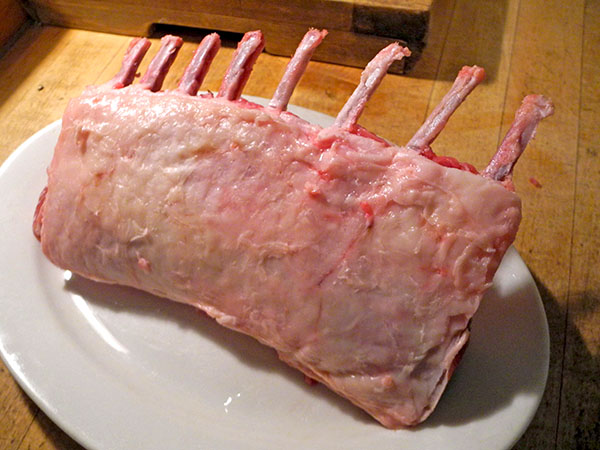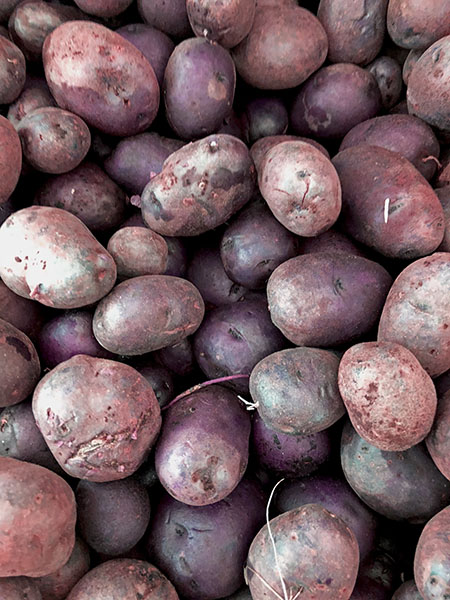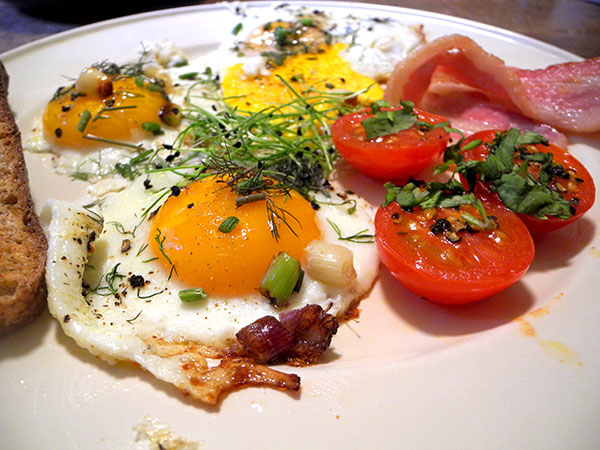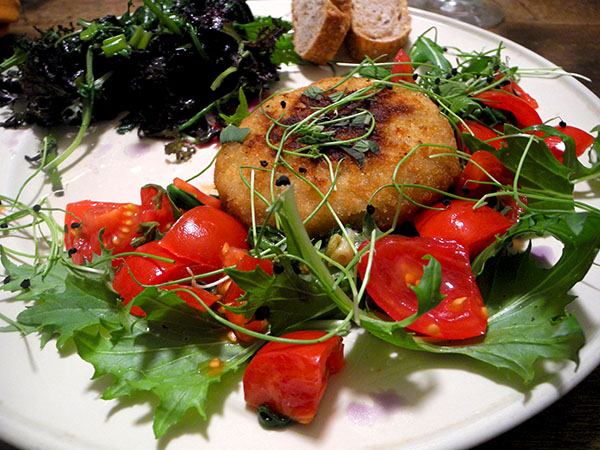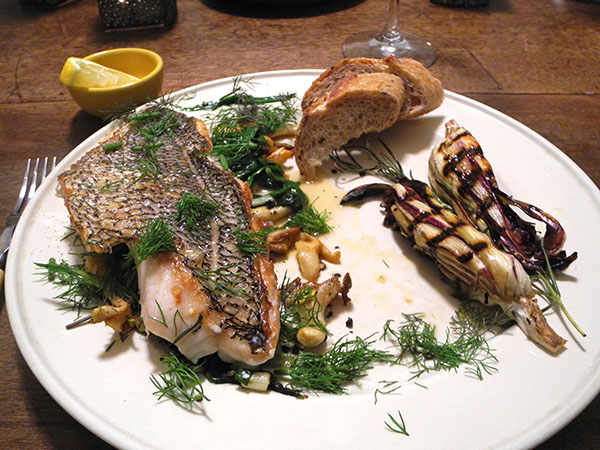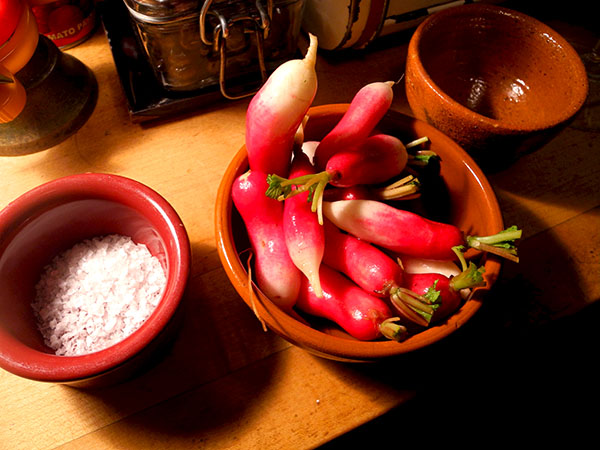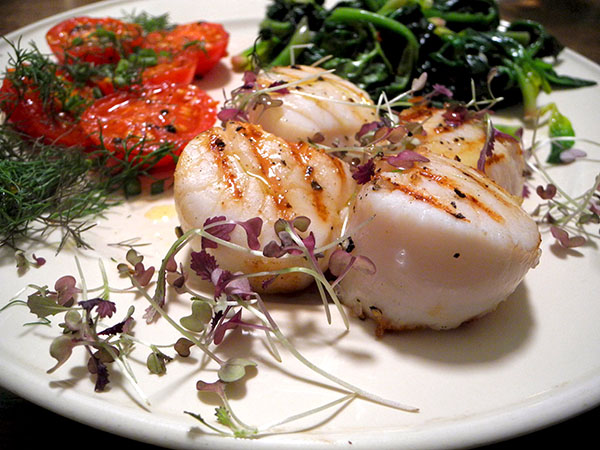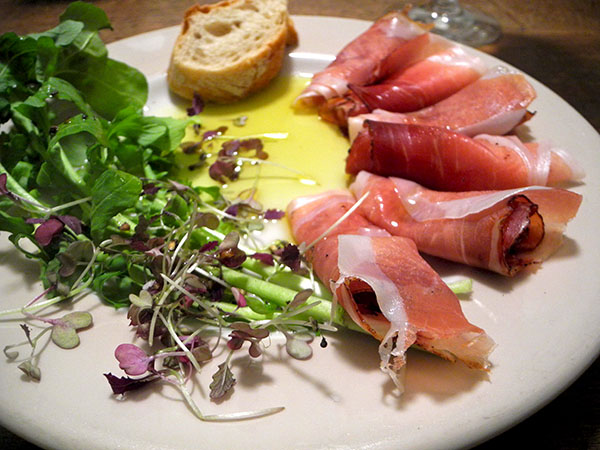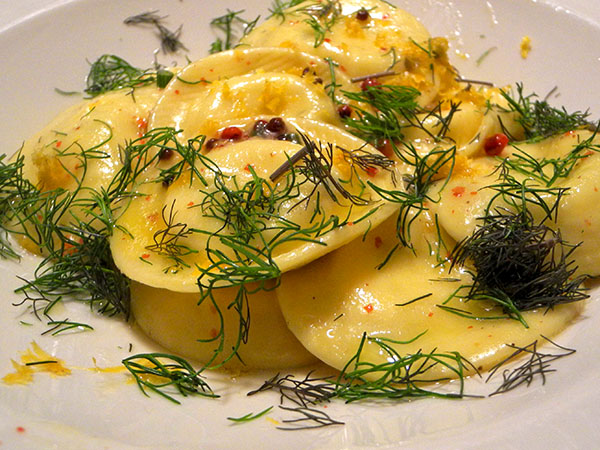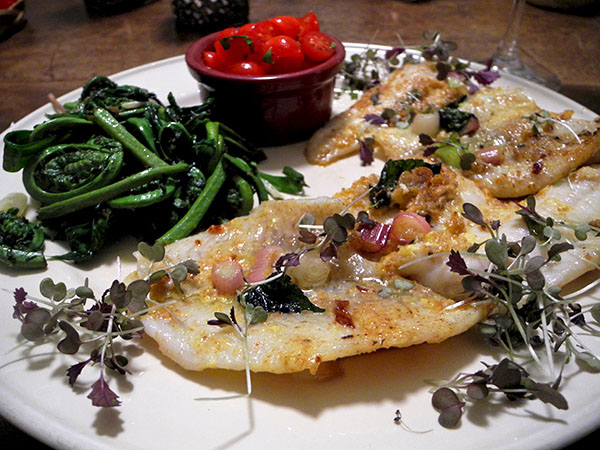
While we were in the middle of this meal last night I tweeted, “omg, just discovered fish, because that’s very much what it seemed like while I was enjoying these extraordinarily delicious little fillets.
Always trust your fishmonger. When you suspect a suggestion, or at least a hint, might be on its way, don’t worry about being steered toward the less interesting or more problematic choices. Listen carefully and be prepared to go for with the counsel, even if you might have had something else in mind for dinner that night.
That’s pretty much how I picked the fish for this dinner.
I was looking over the extensive inventory at Pura Vida Seafood on Friday and, as usual, I had started making a selection by mentally dismissing any fish I saw that I had prepared recently. Then I spotted 2 unfamiliar names written with a grease pen on one of the plexiglass fish case lids: They were advertising 2 kinds of flatfish. Both looked familiar to me, but their names, ‘daylight flounder’ and ‘blackback flounder’, did not. Of course I had to know more.
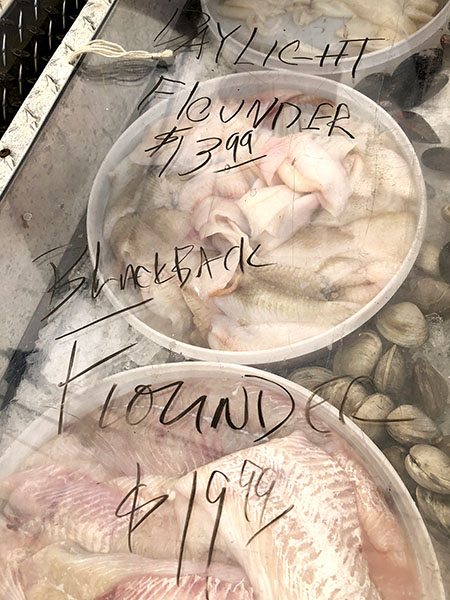
To make the story short, Paul told me that the one or two-ounce daylight flounder (more often called ‘sand dab’) fillets were both firmer and more tasty than the larger – and more costly – blackback, which I’ve learned since is also known as ‘wInter flounder’ (I haven’t been able to find ‘daylight flounder on line). I was 99% sold. My only concern was whether a portion for 2 people would fit inside a single oven pan, if I chose the smaller (and thinner) fillets. I decided I’d probably be safe if I bought only 12 ounces, so that’s where tonight’s dinner began.
Oh, yes, Paul was right about both the firmness and the flavor, and the bounty of fresh spring vegetables that I found elsewhere in the Greenmarket meant these little fillets would be at their very best that night.
The daylight flounder turned out to be a perfect fish, of its kind, and also the centerpiece of a great, great meal. While it may seem like there was a lot of fuss in the preparation of the flounder, almost all of it was for lining the pan: The fish itself needed only a breading and a brief sauté.
Even the preparation of the vegetables, fiddlehead ferns and grape tomatoes, was pretty uncomplicated.


Two important supporting players were ramps and spring red onions.

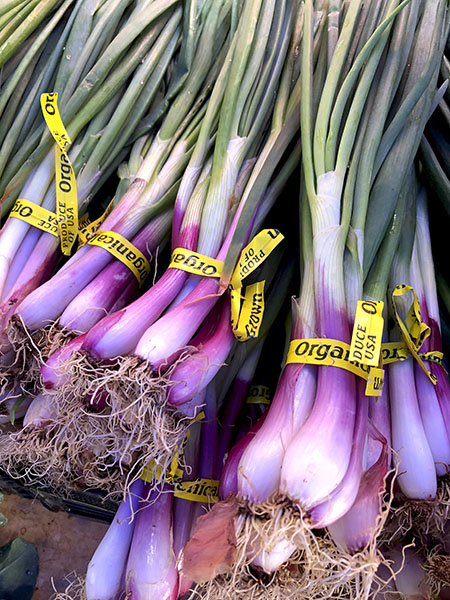
- *eight small (one and a half-ounce) ‘daylight flounder’ fillets, as they had been labeled by Paul Mendelsohn at the Pure Vida Seafood stall in the Union Square greenmarket on Friday, seasoned with sea salt and freshly-ground pepper on both sides, coated lightly with local whole wheat flour from the Blew family of Oak Grove Mills Mills, purchased in the market at an earlier date, submerged in a shallow bowl containing a lightly-whipped mixture of one small Americauna egg from Millport Dairy farm and a fourth of a cup of Trickling Springs Creamery whole milk (they use glass deposit bottles!) from Whole Foods Market, and a pinch of salt, then allowed to stay in the bowl until the accompanying vegetables had been prepared, and the remaining ingredients needed in the preparation of the fish set out, the little fillets removed from the bowl at that time, placed inside a heavy rectangular enameled cast iron pan in which 3 tablespoons of butter had been melted before several large fresh pineapple sage (salvia elegans) leaves from Stokes Farm, one section of a dried, crushed orange/golden habanada pepper from Norwich Meadows Farm, and 2 sliced spring red onions from from Norwich Meadows Farm were added, sautéed over a brisk flame until the fish was golden, less than 2 minutes on the first side, one or one and a half minutes on the second, sprinkled with the juice of an organic lemon from Whole Foods Market, transferred onto 2 plates, some micro red mustard from Two Guys from Woodbridge scattered around them
- *six or 7 ounces of fiddlehead ferns (I think they were the first in the Greenmarket this season) from Lucky Dog Organic Farm, washed vigorously in several changes of water until the brown chaff had been removed [this entertaining, slightly droll video, ‘How to quickly clean fiddleheads‘, could be pretty useful if you have a lot of fiddleheads – and more outdoor space than indoor running water], the very end of the stems cut off, blanched for 2 or 3 minutes, drained, dried, briefly sautéed with chopped ramp bulbs from Mountain Sweet Berry Farm and some chopped fresh oregano and thyme, both from Stokes Farm, and finally the ramp leaves, now sliced thinly, stirred in for 30 seconds or so, the mix seasoned with sea salt and freshly-ground black pepper and finished with a squeeze of juice from a Whole Foods Market organic lemon before being arranged on the plates and drizzled with a bit of olive oil
- *a large handful of small, very sweet grape tomatoes from Kernan Farms in southern New Jersey (Friday was their first day back after this long winter), halved, tossed in olive oil, salt, pepper, a tiny drizzle of white balsamic vinegar, and a little chopped lovage from Two Guys from Woodbridge, served inside small ceramic prep bowls placed on the plates
- the wine was a Portuguese (Alentejano) white, Esporão V Verdelho 2016, from Garnet Wines

- *the music, as we were sitting at the table for some time, was actually 2 full albums, ‘Alarm Will Sound presents Modernists’ and ‘Acoustica’ by Alarm Will Sound/Aphex Twins, as a tiny memorial for Matt Marks, an amazing artist and wonderful human being, whose death was announced earlier that day
